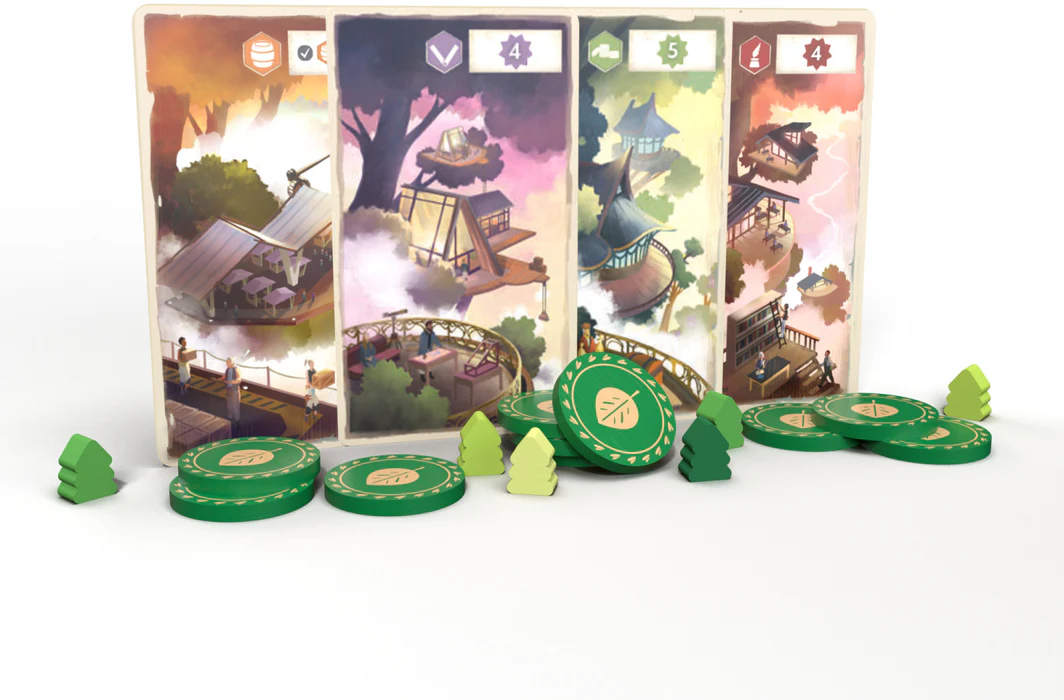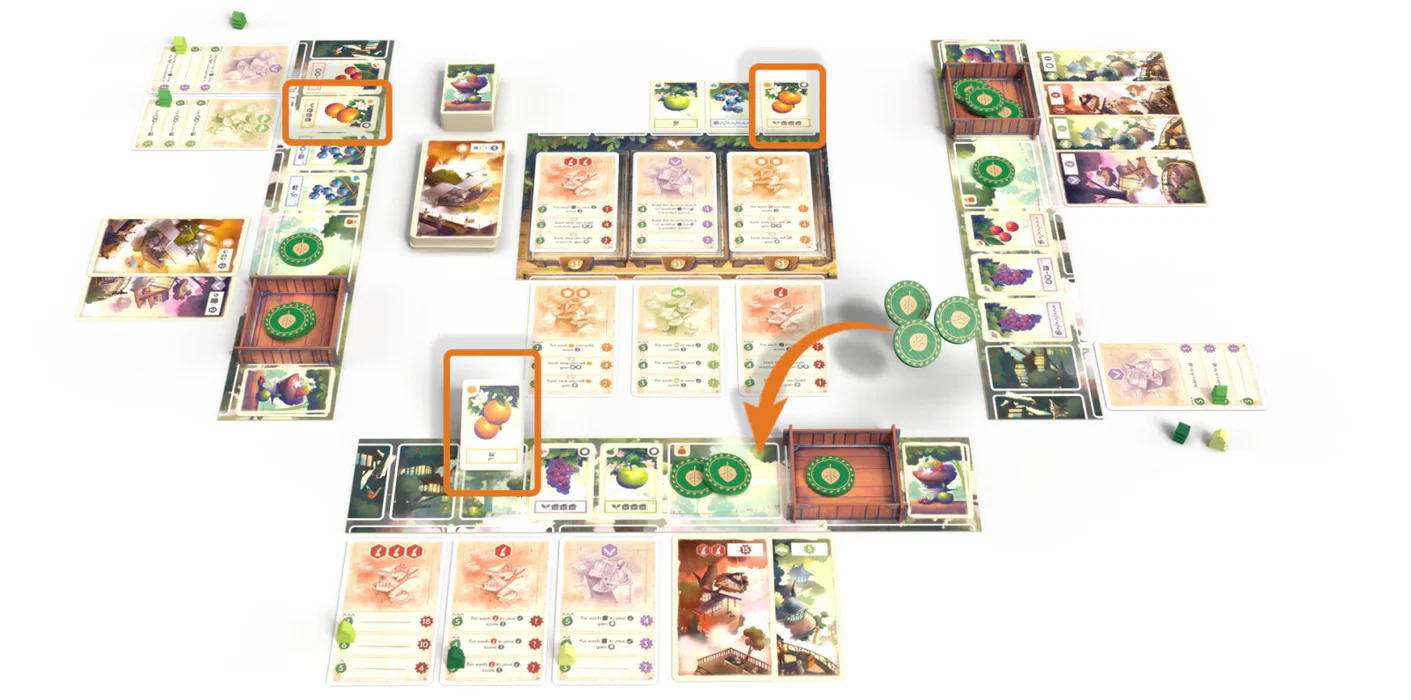Tree Society Board Game Review
In a year, or rather more accurately, in a half decade where it seems 1-in-3 board games that have been released have had a nature theme, it’s pretty hard to stand out. As I glance at the shelves behind me as I write, I would argue a good 30-40 percent of my collection of games could be classified as nature themed. From games about animals, to games that have animal pieces, to games about trees, leaves, mushrooms, and more. So when yet another nature game was announced, to be published by Asmodee, I was a bit skeptical. When does this theme end?
As we wrote last week, the components in Tree Society are really great. I don’t love the player boards and wish they were cardboard, but otherwise I have no complaints about the game’s production value. And honestly, while there is a nature theme to the experience – selling fruit and building trees – it’s more about creating a society that just happens to reside up in the canopy.
And that is what you are doing in Tree Society – building different trees that house different buildings that give different benefits. The cards are broken down into a number of different themes, each with it’s own unique symbol. Further, these cards, in most situations, have special abilities you can take advantage of while you play. Some cards might give you extra money to spend on your next turn, others will give you the ability to sell an extra fruit, etc. Finding a good combination of cards that earn you lots of points, and cards that help you engine get going, is a key decision that I really enjoyed.
The flow of Tree Society is great. Sell a fruit and gain your special ability (add two coins to your chest for next turn, take a 2 coin discount on your next upgrade, sell an additional fruit, etc), purchase and/or upgrade your trees, and collect a new fruit card for future rounds. It’s a simple concept and can be taught in less than 10 minutes, which is part of what makes this game so attractive.
 But there are other things to think about as the game progresses that provide a nice level of introductory, strategic depth. The amount of coins you get for selling a fruit is based on the number of faceup cards of that fruit type on the table. This includes fruit on the central board, and everyone else’s’ player boards. You are constantly thinking about which fruits other players might be enticed to sell when deciding which fruit to add to your own board – the more fruit there is, the more money you make! If everyone sells off the fruit you just collected, it won’t be worth much on your next turn!
But there are other things to think about as the game progresses that provide a nice level of introductory, strategic depth. The amount of coins you get for selling a fruit is based on the number of faceup cards of that fruit type on the table. This includes fruit on the central board, and everyone else’s’ player boards. You are constantly thinking about which fruits other players might be enticed to sell when deciding which fruit to add to your own board – the more fruit there is, the more money you make! If everyone sells off the fruit you just collected, it won’t be worth much on your next turn!
Then the card selection is really important. As we noted before, some cards provide some great benefits that get your game engine moving well. But they also take up one of three slots below your board. Too many cards with good abilities, likely too few points for you to win. Not enough cards with abilities and you are likely working a lot harder than everyone else to complete cards for points. There is a delicate balance here that I think both new board game players and long time fans will enjoy.
If it’s not obvious by now, Tree Society is a pretty lightweight experience. For our group, we’ve used Tree Society as a filler game, either before the main thing we plan to play, or after if we finish a game a bit early. It’s quick, doesn’t take a whole lot of mental fortitude to play, and can easily be taught regardless of someone’s level of board game knowledge! It’s not for everyone, but it definitely will be for many!




